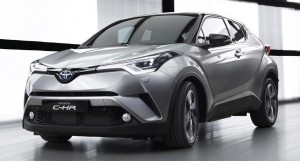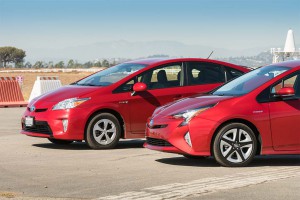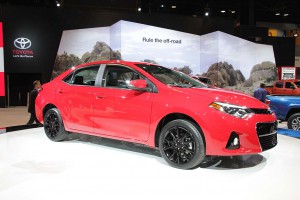Toyota Motor Corp.’s operating profit earnings took a 43% plunge during the July to September quarter, the world’s largest automaker struggling in the face of numerous headwinds. Net income, meanwhile, slid 36% for the quarter.
The growing strength of the yen was one problem for the Japanese giant. But the automaker also faced challenges in North America where the overall automotive market is slipping after the strongest recovery in history. Complicating matters, Toyota has been overly dependent on lower-profit passenger cars, such as the Camry and Corolla, as higher-margin trucks have been gaining momentum.
“Supply has not kept up with demand” for more profitable models like the Toyota RAV4 and Highlander utility vehicles, acknowledged Executive Vice President Takahiko Ijichi, something that has led Toyota to trim its outlook for North America for the rest of the fiscal year ending March 31, 2017.
For the most recent quarter, Toyota reported an operating profit of 474.64 billion yen, or $4.69 billion. Net income came in at 393.71 billion yen, or $3.89 billion. On a per-share basis that was $2.51. Global revenue, meanwhile, fell 8.8%, to 7.10 trillion yen, or $70.10 billion, even though vehicle sales actually rose 2.5%, to 2.5 million vehicles.
Whether that will be enough for Toyota to maintain its global sales crown remains to be seen. It has led the industry for a decade, save for 2011, the year the Japanese homeland was struck by a disastrous earthquake and tsunami that all but shut the domestic auto industry down for months. But Toyota has watched its lead narrow in a tight race with German rival Volkswagen AG, VW narrowly outselling its rival during the first half of 2017.
(Still number one. But can Corolla maintain its lead as it marks its 50th anniversary? Click Here for more.)
Toyota faces a number of challenges, not least the relative slowdown in growth in the Chinese market. But it has been particularly hard hit by misidentifying trends in the critical U.S. market, its largest. Toyota seemed especially well positioned to handle things when oil prices surged to record levels, in part due to products like the Prius hybrid, the world’s most popular gas-electric model. But it has fallen short as gas prices have plunged.
While utility vehicles, pickups and other light trucks now account for about 60% of the U.S. market, they made up just 52% of Toyota’s sales for the first nine months of 2016. That was one of the reasons why the maker reported an 8.7% decline in overall U.S. sales in October. For the first 10 months of the year, Toyota’s truck sales were up 7.1%, but passenger car sales slid 12%.
Significantly, the Prius hatchback has fallen 12% this year despite a complete redesign last year. The entire Prius “family,” including the small Prius C and larger Prius V, is off 28% through October. Toyota is just launching a new plug-in version of the hatchback, dubbed Prius Prime, but it is expected to be a relatively low-volume addition to the hybrid family.
(Long skeptical Toyota set to reverse course, launch long-range EVs. Click Here for that breaking story.)
The automaker has been pushing to increase light truck output while also preparing new models targeting niches it has so far missed. Next week’s Los Angeles Auto Show will bring the launch of the new Toyota C-HR, set to become the smallest crossover-utility model in the maker’s American fleet. The C-HR was originally set to be sold through the now-abandoned Scion brand.
Another problem in North America was the downward swing in local currencies, especially the Canadian dollar and Mexican peso. Increasing incentive costs also hurt North American operating margins.
(Click Here to check out the new Toyota C-HR.)
With the weakness of the U.S. market, Toyota cut its global sales forecast for the full fiscal year by 50,000 vehicles. The target is now 10.1 million cars, trucks and crossovers, a flat figure that could make it easier for resurgent Volkswagen to overtake.
“Going forward, our external environment is likely to remain challenging with the yen appreciation and ongoing changes in market conditions,” EVP Ijichi said during a Tokyo news conference.
Despite such challenges, Toyota had some upbeat news for investors. Though it sees operating profits for the fiscal year ending next March tumbling 40%, to 1.7 trillion yen, or $16.78 billion, that’s actually a bit better than the maker originally forecast. It had been anticipating an operating profit of only 1.6 trillion yen. Net income is now expected to reach 1.55 trillion yen, or $15.30 billion, compared with the original forecast of 1.45 trillion yen. Nonetheless, that would still be a 33% year-over-year decline.



